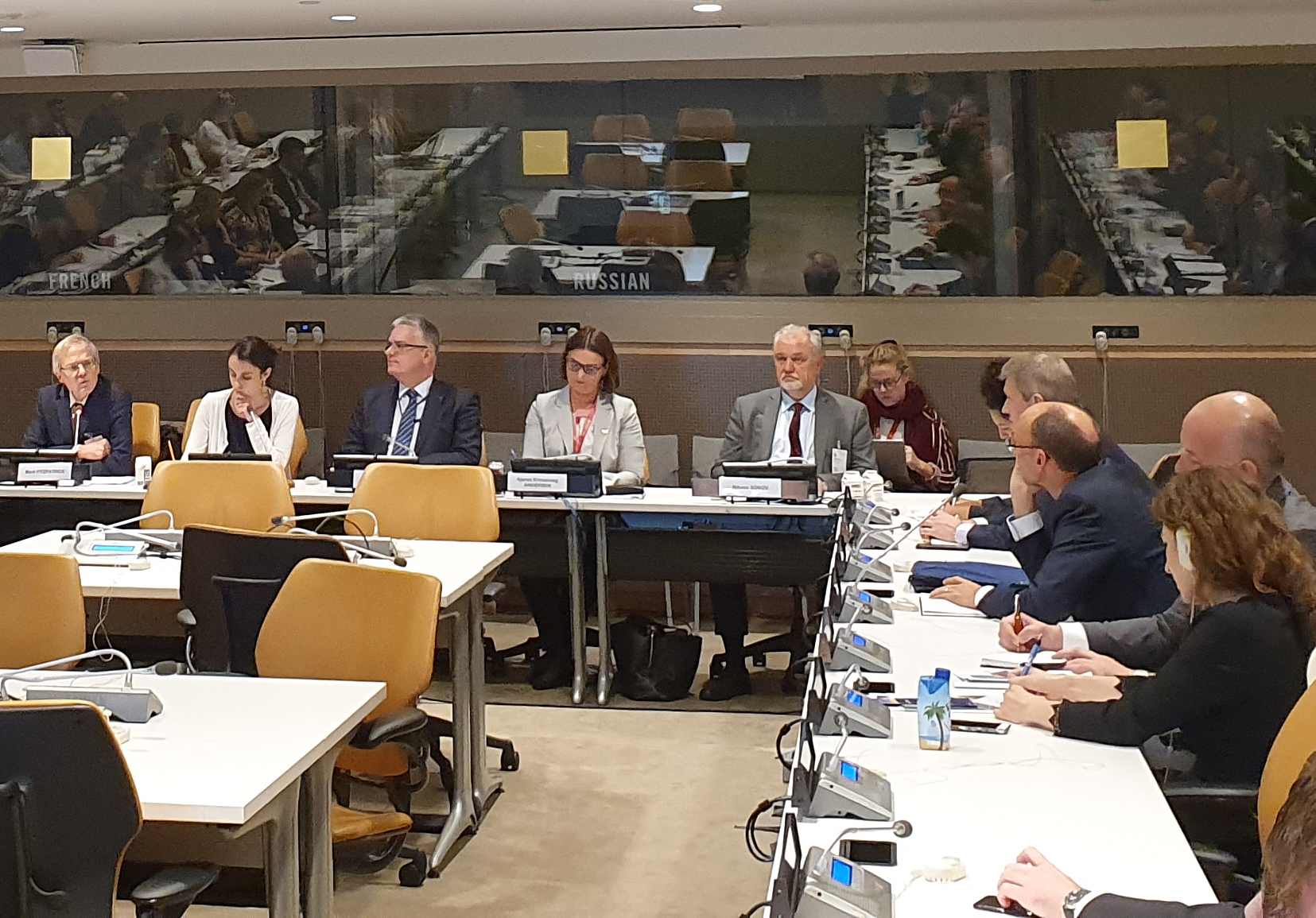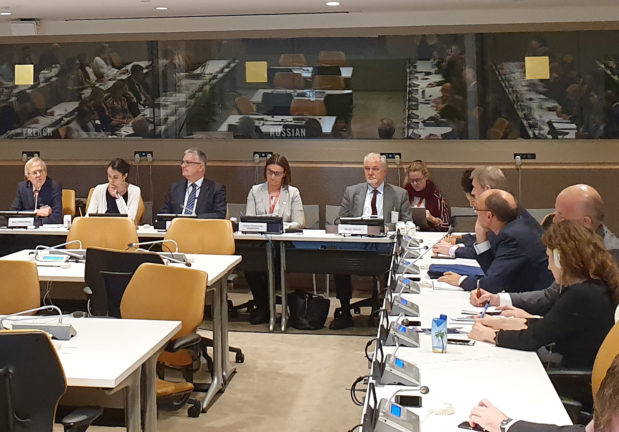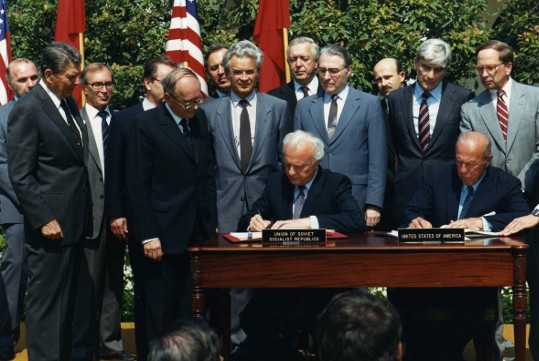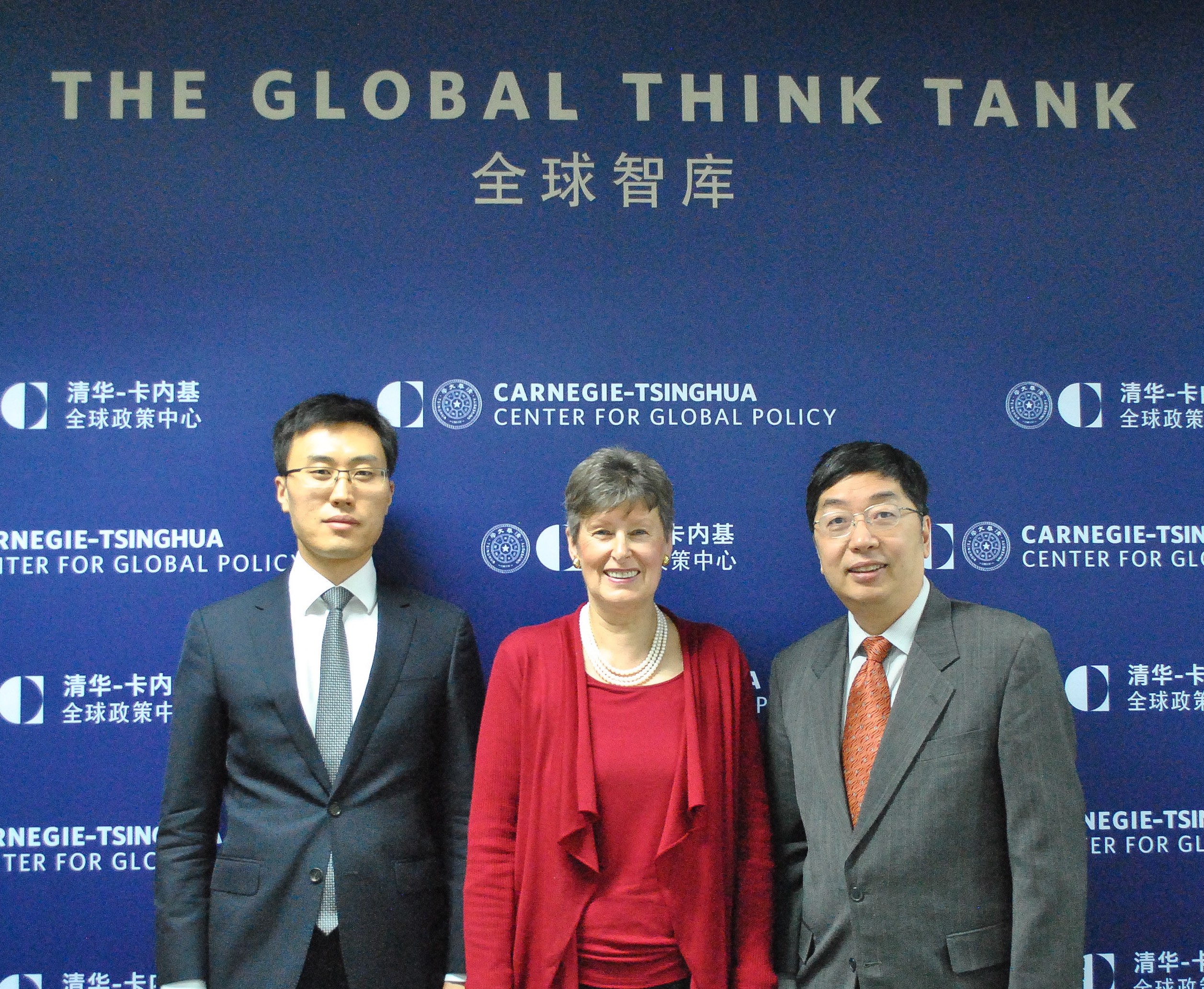
10 October 2019
Nikolai Sokov
Prepared text for presentation at the side event at the First Committee of the UN General Assembly “Existing and possible risk reduction initiatives in the field of missiles,” held by The Fondation pour la Recherche Stratégique, with the support of the European Union

In the post-INF [Intermediate-range Nuclear Forces Treaty] world, we must cherish every regime that enhances transparency and predictability, as well as reduces the risk of misinterpretation of state activities with regard to missile developments. Europe is the most sensitive region in this regard: its security needs are immediate and urgent, especially in the post-INF environment, but other regions could benefit from the same measures, especially South Asia and Northeast and East Asia. Addressing these needs is the Hague Code of Conduct Against Ballistic Missiles Proliferation (HCoC). That regime politically obligates its members to provide pre-launch notifications on ballistic-missile and space-launch-vehicle (SLV)launches and test flights. Pre-launch notifications include data on generic class of the Ballistic Missile or SLV, the planned launch notification window, the launch area, and the planned direction of the launch. Subscribing states also committed themselves to submit annual declarations of their country’s policies on ballistic missiles and SLVs.
HCoC also has a missile nonproliferation dimension. It calls on its members to contribute to efforts to stem proliferation of ballistic missiles capable of delivering weapons of mass destruction, but does not contain specific, operative provisions toward that goal (although HCoC itself was in part a reaction to a far-reaching Russian proposal, made public in 1999, to create a Global Control System—a missile nonproliferation regime similar in scope to the Nuclear Nonproliferation Treaty). The main burden of missile nonproliferation falls on the Missile Technology Control Regime (MTCR), an export-control regime established in 1987 with, currently, 35 members, which regulates transfer of missiles—ballistic and cruise—as well as components, technologies, equipment, etc.
HCoC was established in 2002 and has been quite successful, especially in the calmer years of the last decade. As the political and military situation has gone from bad to worse in recent years, and more countries have acquired reasonably modern and capable missiles, it is only justifiable to ask the question if HCoC could be modified to better address new challenges.
Changes in an existing regime is a sensitive matter. There is always the risk that attempts to improve a regime may result in its breakdown. Expansion of HCoC’s provisions must be approached with caution. On the other hand, there exists an obvious need to address the increasingly volatile and dangerous situation in many parts of the world. Moreover, creation of a new regime is usually more time- and effort-consuming than amending an existing one.
The task of enhancing the value of HCoC for international security can be achieved by both expanding its transparency provisions and by harmonizing HCoC with MTCR. Since the latter does a reasonably good job following several stages of improvement (in particular the addition of cruise missiles and the rule that transfers within the group follow the same rule as transfers outside it), the bulk of modifications will have to apply to HCoC.
As we contemplate missile nonproliferation, we need to contend with two major challenges.
The regime covers only ballistic missiles, whether intended for military or peaceful purposes. It does not include cruise missiles, which have become an increasingly important warfighting tool, nor strike UAVs, which are a new, up-and-coming tool to fight wars. MTCR already covers cruise missiles and harmonization of two regimes requires expansion of HCoC to match that scope; both should be expanded to strike UAVs. Multiple states already pursue these programs and more will likely join making ballistic missiles no more than one of several proliferation-relevant fields, perhaps even not the most important one.
HCoC has an arms-control dimension to the extent that it includes test launches of weapon delivery vehicles. Information exchanged within its framework, however, is limited, and it would be desirable to expand it, turning HCoC into something like a global missile-launch notification network with rules similar to what the United States and Russia have had with regard to launches of strategic missiles. Such a regime—especially if it includes long-range cruise missiles—could have an immediate positive impact on Europe, but also help improve situation in other regions. For some non-members, this could be an important consideration to join HCoC.
From its inception, HCoC has encouraged the sharing of benefits of peaceful uses of space and of ballistic missiles. This part of its activities has, unfortunately, remained rather moot. It might be advisable to discuss far more robust cooperation on space programs than today, perhaps even national and joint programs, as long as there are guarantees of their peaceful nature. Areas such as geolocation, communication, geological surveys, climate research, etc., could enhance the interest of both current and potential future members. Details and modalities need to be discussed further, but focused development of such incentives is vital for the future of the missile nonproliferation regime. A system of incentives can hardly sway some countries, such as North Korea, but many could be interested.
Furthermore, greater cooperation in peaceful space could also enhance transparency of these programs.
HCoC’s inception was implicitly related to PAROS, the Prevention of Arms Race in Outer Space, which is discussed in the context of the Conference on Disarmament in Geneva. It might be desirable to discuss expansion of transparency with regard to launches of SLVs for military purposes; even a general description of payload could help alleviate concerns of some countries (Russia and China in particular) about the “space-based strike weapons” and of these and other countries about progress in antisatellite weapons.
A number of countries with robust and developing missile programs are not part of the regime, including China, Iran, Israel, Pakistan, North Korea. These gaps not only reduce the relevance of confidence-building measures, but also make some members – especially Russia, which is within reach of these four – reluctant to accept further development of HCoC’s without expansion of membership.
Making HCoC more attractive to non-members will depend on its ability to address their security interests, which implies expansion of mission and scope, including along the lines outlined above. Such expansion may also encourage existing members to become more proactive in drawing non-members into the regime.
Even after expansion, HCoC will still reman a confidence-building regime. It will certainly not contain limitations. Still, even expansion of confidence-building measures will be a positive development in the current environment.
It will be necessary to find the right balance between interests of different parties – including countries that are not currently members of HCoC, but whose membership is desirable—so that each could benefit some way. It is also important to keep in mind that enhancements in the regime can only be multidimensional: an enhancement that is limited to one issue area will be opposed by too many countries to succeed and could endanger the continued existence of the current regime.
Expansion of scope, including cooperation in peaceful uses of space and missile programs, might require creation of a small permanent secretariat, including the technical cooperation function similar to (but much smaller than) the relevant section of the IAEA. Currently the HCoC does not have any permanent secretariat—Austria supports the liaison function—but this might not be enough. The advisability of a secretariat will require serious consideration.
Given the highly sensitive nature of issues at hand, it would make sense to move slowly and cautiously. Work on enhancement of HCoC should begin informally, through a series of track 2 and track 1.5 meetings to sound positions of regime members with regard to its further development, to identify possible areas of compromise and package solutions. Informal consultations are also the best way to involve countries that are not currently members of HCoC, but whose membership is important for long-term stability and effectiveness of the regime.
Overall HCoC plays the role for which it was created quite well. It can, without doubt, continue in its present form and present scope. Given the growing instability and continuing expansion of national missile and related programs (ballistic, cruise, and UAVs), however, it is worth seriously considering a major upgrade for HCoC. It is difficult and politically risky, but benefits will likely outweigh the risk.

